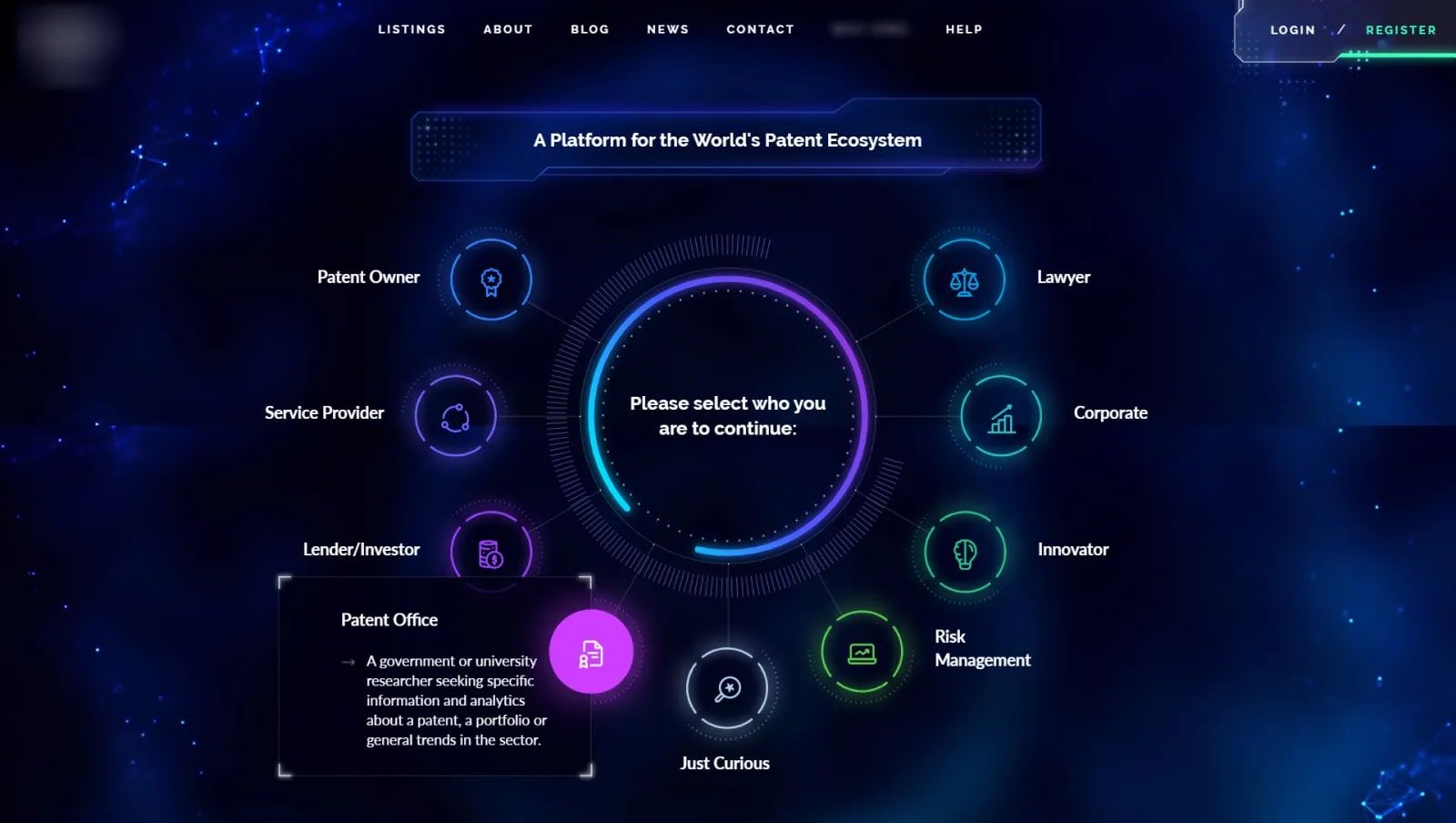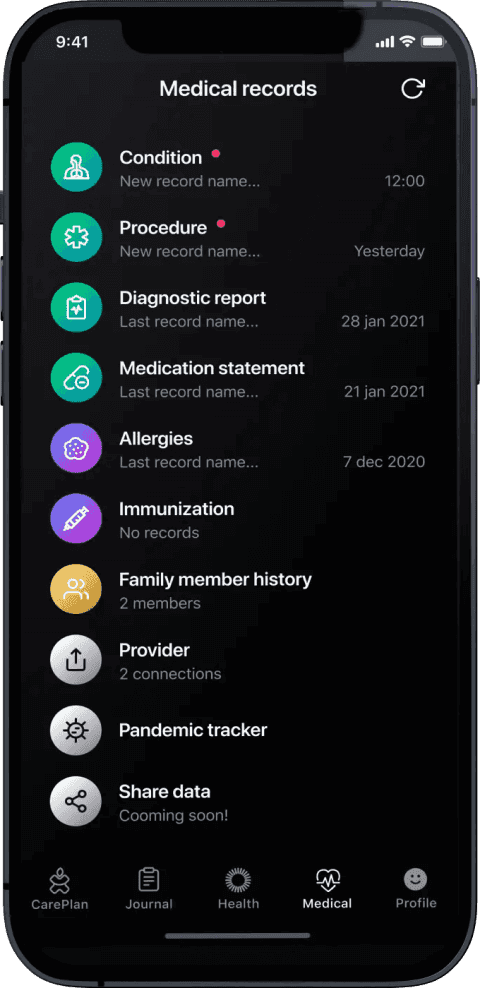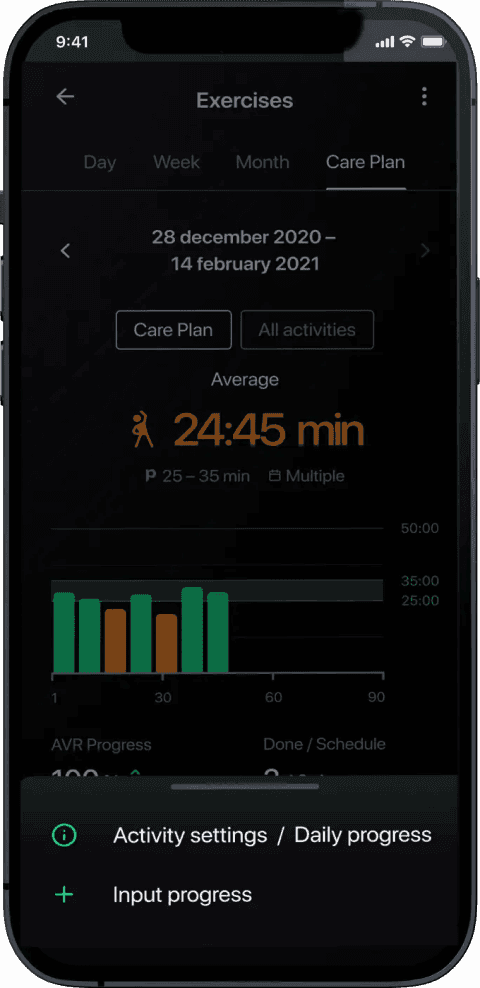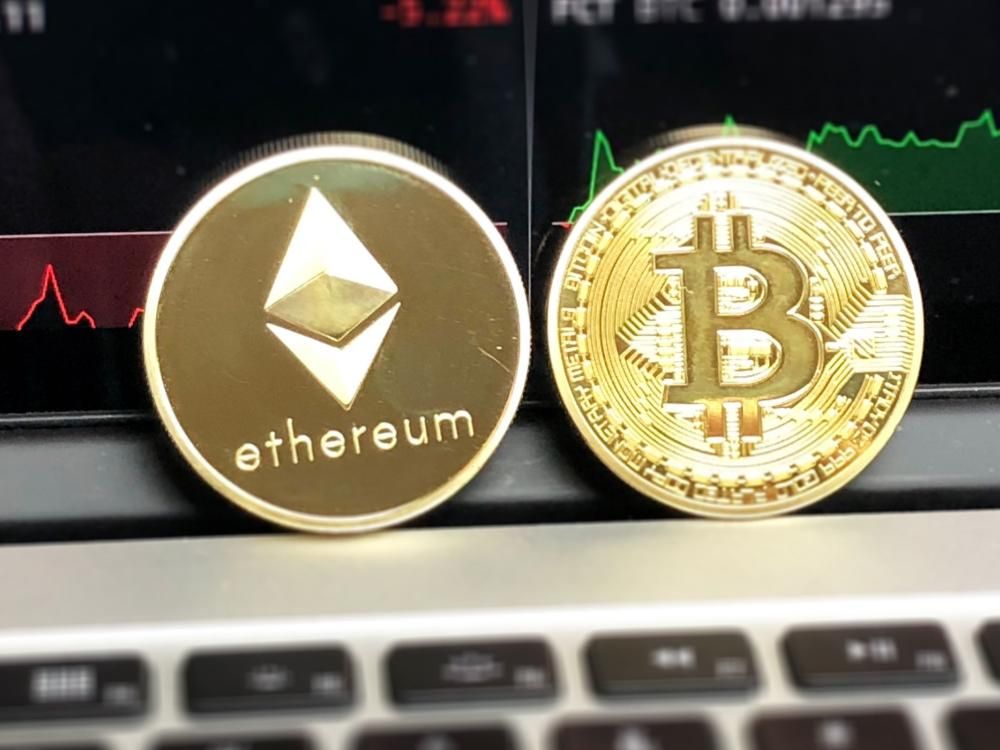
Blockchain in healthcare: use cases, solutions, & benefits
December 20, 2023
- Home
- Blockchain services
- Blockchain in healthcare

by Ruslan Tuktarov,
Head of Blockchain Solutions Department
Itransition offers blockchain services to help healthcare organizations automate a variety of processes, from safe and transparent patient data exchange to secure supply chain management.
Table of contents
Blockchain prospects in healthcare
patient records were breached in 2021
Protenus Breach Barometer
blockchain in healthcare market CAGR 2022-2028
PRNewswire
blockchain in genomics market CAGR 2021-2028
Verified Market Research
How a blockchain system operates in healthcare
A decentralized distributed system at its core, blockchain can be an effective technology for recording and storing medical records and facilitating various transactions within healthcare organizations. Blockchain consists of linked transaction blocks that form a shared, immutable record ledger. It relies on cryptographic techniques, allowing blockchain network participants to interact (i.e., view, exchange, and store data) securely. With no central authority, records are distributed across all the network participants and undergo verification by the network, enabling trustless collaboration.
Healthcare organizations can use blockchain to verify patients’ identities, medical histories, prescriptions, and genetic data. Blockchain-based medical solutions can grant patients complete ownership of their health records so that they can give or revoke access to their data at any time. Healthcare providers, in turn, can facilitate issuing prescriptions.
Healthcare organizations can also use blockchain in combination with smart contracts to reduce costs and enforce validity of transactions by eliminating intermediaries. A smart contract is a piece of code that is deployed on a blockchain and gets executed automatically when certain conditions are met.
Health organizations direct information to the blockchain
Health organizations provide services to patients
Clinical data is tracked in existing health IT systems
Standard data fields and a patient’s public ID are redirected to the blockchain via APIs
Transactions are completed & uniquely identified
Each transaction is stored on the blockchain, containing the patient’s public (non-identifiable) ID
Smart contract processes incoming transactions
Health organizations & institutions can directly query the blockchain
Health organizations and institutions submit their queries via APIs
Non-identifiable patient information (e.g. age, gender, illness) is viewable
Data can be analyzed to uncover new insights
Patients can share their identity with health organizations
The patient’s private key links their identity to blockchain data
The private key can be shared with new health organizations
With the key organizations can then uncover the patient’s data
Data remains non-identifiable to those without the key
Capabilities of blockchain technology for healthcare

Data protection
Blockchain enables fail-proof data protection thanks to its decentralized and immutable nature. Patient records, medical device data, clinical trial results, telemedicine appointments, drug research reports, and other sensitive information are encrypted and stored in a way that prevents unauthorized access, modification, or transfer, and allows for immediate detection and aversion of any tampering attempts.
Identity & data verification
Blockchain facilitates highly reliable identity verification and thus minimizes the risk of fraudulent activities in the healthcare sector by creating a decentralized network for validating patients, payers, healthcare service and insurance providers, and other stakeholders. Each user is assigned a unique digital identifier, stored on the blockchain in a way that prevents forgery and catfishing.
Interoperability between platforms
Blockchain technology helps provide a standardized data structure and shared protocols for different healthcare systems to access and manage information. Thus, the interoperable blockchain network improves care coordination, reduces duplication of data and resources, and enables immediate access to vital information from different facilities.
Secure payments
Payment terms and conditions can be pre-programmed with smart contracts that make transactions happen automatically when specific conditions are met. This speeds up bill settlement and reduces transaction costs. Also, due to the unique encryption of every transaction, blockchain technology enhances transparency of the financial operations, and thwarts billing fraud. At the same time, the utilization of some cryptocurrencies helps payers maintain anonymity.
Ready to improve your healthcare processes with blockchain?
Applications & benefits of blockchain in healthcare
Blockchain is a reliable pharmacy automation solution for the drug authenticity problem, as it permits tracing every drug up to its very origins. Blockchain can be used to encapsulate information about the drug at every stage of its lifecycle, down to its production and distribution. Every block within the blockchain containing drug information will have a hash linked to another block, and every block will come with a time stamp that cannot be altered.
Incrementation of transactions in the blockchain will be visible to all authorized parties, with a medicine’s movement from one party to another trackable in real-time. Medicine consumers will also be able to verify the authenticity of purchased products by scanning the QR code and looking up the information about the manufacturer and other relevant supply chain participants. Patients will be confident that they are buying a genuine patented treatment from an accountable manufacturer, which will push counterfeiters off the market.
Benefit
- Enhanced patient safety
- Improved health outcomes
- Increased revenue for licensed manufacturers
Supplier
- Certificate of origin
- Batch number
- Processing data
- _______________________
- _______________________
Manufacturer
- Certificate of origin
- Batch number
- Processing data
- _______________________
- _______________________
Wholesaler distributor
- Certificate of origin
- Batch number
- Packet Id
- Processing data
- Temperature
- _______________________
Hospital or pharmacy
- Certificate of origin
- Batch number
- Packet Id
- Processing data
- Temperature
- _______________________
Patient
- Certificate of origin
- Batch number
- Packet Id
- Processing data
- Temperature
- Invoice number
- Customer Id
- _______________________
Scheme title: Blockchain-based supply chain of pharmaceutical products
Data source: researchgate.net
Facilitated clinical trials
Blockchain properties such as time stamping, peer-to-peer reporting, and processing capabilities are useful for fraud prevention in clinical trials. The distributed ledger technology can be used to store and securely share documents like project proposals, research design, surveys, blood tests, and informed consent of the participating parties. This way, blockchain adds credibility to the research performed, with every document easily verifiable, which strengthens the security of participants’ data, and eliminates the issues of lost documents or datasets.
Benefit
- More credible and transparent research
- Reduced costs
- Enhanced satisfaction of trial participants
EHR data security
A top healthcare compliance analytics company Protenus observed 905 health data breaches in 2021 and found out that healthcare data distribution over different databases, often neither consistent nor interoperable, is one of the main reasons. Another problem is though HIPAA has strict regulations around healthcare data privacy, patient records cannot be isolated as there are several parties who may need access.
Blockchain resolves those issues by offering a unified platform for storing and managing all relevant data in one location while maintaining proper security and access control. Pieces of patient data are stored as blockchain blocks identifiable through the patient’s unique authentication ID. This arrangement also allows for sharing health information (blocks) without revealing the ID if the patient wishes to remain anonymous, for example, when participating in clinical research.
Benefit
- Healthcare data security
- Transparent and streamlined data sharing among different organizations
- Poof of a particular medical history origin and ownership
Cryptocurrency payments
There are a number of blockchain use cases in healthcare related to payment. The simplest example is virtually untraceable Bitcoin or other crypto reimbursement for medical services, which is crucial in cases when payers want to keep their confidentiality. Blockchain can also facilitate health data monetization for people who are willing to share their genomic data for research purposes in return for a financial reward. Blockchain can encapsulate their medical records and then facilitate transactions via cryptocurrency payments.
Benefit
- Confidential and secure payments
- Fast and reliable reimbursements
- New monetization opportunities
Medical staff credentialing
A blockchain-based credential verification system can allow physicians to easily prove that they are licensed professionals without having to contact every institution where the credentials were obtained. Such an exchange platform for healthcare organizations can contain credentials of nurses, doctors, and other types of employees within the healthcare sector. All relevant credentials are input into a distributed ledger and accessed by those parties who entered a special blockchain credentialing agreement. Additionally, permissions to practice at specified levels and in particular locations can be stored similarly.
Benefit
- Facilitated healthcare personnel hiring
- Simplified job application for medical professionals
- Reduced risk of fraud
Simplified & secure insurance
If a patient buys their medical insurance policy using smart contracts, policy details will be stored in the patient’s profile on the blockchain more securely than when stored in a traditional database. Also, when a patient undergoes a procedure covered by insurance, the smart contract will be triggered automatically and the money will be transferred from the payer to the hospital.
Benefit
- Faster insurance claim fulfillment
- Reduced operational costs
- Insurance fraud prevention
Scheme title: The insurance model with intermediaries vs the blockchain model with smart contracts
Data source: linkedin.com — Healthcare blockchain: how smart contracts will revolutionize care delivery
Success examples
Blockchain is used in a variety of information systems and other healthcare software, proving its immense value to everyone in the healthcare industry.
Patent management platform
Itransition delivered a blockchain-based patent platform that enables users to buy, sell, license, and evaluate patents. The solution also provides free patent analytics and engages relevant service providers from around the world. By automating complex monetization processes and promoting IP market transparency, the solution significantly reduces the costs of patent selling, purchasing, and licensing.
Image title: Patient management platform’s home page

Healthcare data management platform
Patientory has developed the largest HIPAA-compliant healthcare information exchange network powered by blockchain technology. The platform allows users to not only securely store and transfer their health information but also monetize it, receive personalized health plans based on patient data, and order and pay for their medication. At the same time, healthcare organizations can leverage big data stored in the network for public health improvement.
Image title: Patientory’s interface
Image source: patientory.com


Pharma supply chain management solution
IBM collaborated with Walmart, KPMG, and Merck to support the U.S. Drug Supply Chain Security Act (DSCSA), developing a pilot program to demonstrate how the use of blockchain can facilitate product traceability. After proving the initial feasibility of the project, they went on collaborating with more industry players to deliver the expanded version of the solution.
Image title: Pilot solution’s user personas and UI
Image source: ibm.com — FDA DSCSA Blockchain Interoperability Pilot Report
Credentials validation solution
The ProCredEx startup utilizes distributed ledger technology to connect credentialing teams, healthcare organizations, and providers, allowing them to create compliance verifications for different industry requirements and sell or share them afterward, as well as purchase the verifications they need.
Video title: ProCredEx case study
Video source: r3.com — PCX Case Study
Our services
Our experts provide consulting and development services for healthcare organizations of any size and speciality.
Strategy
Our experts analyze the healthcare sector your organization functions in and your requirements to determine if blockchain technology is the best solution in your case. We then recommend a suitable strategy for blockchain software development, implementation, and sustainable use based on your practice’s specifics.
Audit
We assess the architecture and logic, operation, performance, and resistance to network contingencies of healthcare blockchain. It is a must-have stage before further extension and optimization of the existing blockchain technology, or adoption of a new platform.
Security
We carry out security testing to check how the digital ledger resists potential fraudulent activities. If any security issues are detected, we help healthcare professionals to restore and reinforce their blockchain solution.
Development
Itransition designs and implements decentralized applications (dApps) as well as integrates them into healthcare organizations’ ecosystems. With our solutions, healthcare providers get a protected, failure-proof environment for diverse transactions and collaboration. We offer a wide range of blockchain-based enhancements to a variety of healthcare systems.
- Electronic health record management
- Medical data storage and sharing
- Patient consent validation
- Protected data access to clinical tests and medical images
- Сlaim management
- Patient billing and healthcare payments
- Clinical trial and research results management
- Secure and reliable IoT for medical settings
- Drug traceability
- Solutions for health systems’ interoperability
Our go-to blockchain platforms for healthcare
We consider your business strategy, workflow specifics, desired blockchain applications, existing infrastructure, and budget before determining which blockchain platform will suit you best and building a custom solution on top of it.
Polygon is a layer 2 scaling solution for Ethereum, making it a good choice for those already familiar with ETH tools. Polygon uses multiple scaling methods to achieve wide throughput, high transaction speed, and relatively low fees. It already has a number of successful cases in the healthcare industry and is expanding further.
Solana is a blockchain with a relatively large user-base, comprehensive documentation, and a wide array of implementation tools. Its high transaction speed and low fees makes it suitable for healthcare companies that want to innovate their processes on a budget.
Arbitrum is also a layer 2 scaling solution for Ethereum like Polygon which boasts even more affordable transaction fees but lower transaction speed. It is relatively simple to implement and is suitable for healthcare organizations that are already familiar with Ethereum, as well as those new to the blockchain technology.
Concerns about blockchain adoption in healthcare
Scalability
The healthcare industry produces terabytes of data each year, and as the number of transactions increases, blockchain networks must scale better.
The healthcare industry produces terabytes of data each year, and as the number of transactions increases, blockchain networks must scale better.
Developers and innovators are constantly coming up with new and better informational technology solutions to overcome this problem. Discuss the scalability concern with your vendor to make sure they have an upgrade plan for the network your organization is using.
Integration
A majority of legacy healthcare systems are hard to integrate with blockchain technology.
A majority of legacy healthcare systems are hard to integrate with blockchain technology.
Care providers can rely on third-party integration, data migration services, and software like custom connectors. In some cases, hospitals will have to update existing healthcare systems or switch to entirely different ones to improve interoperability in their healthcare ecosystem.
Data privacy
While transparency is valuable in some cases, patients and providers are worried about data privacy in blockchain networks.
While transparency is valuable in some cases, patients and providers are worried about data privacy in blockchain networks.
Healthcare organizations and regulators should work together on data governance strategies taking into account the specifics of the healthcare industry’s innovative technologies and existing security and privacy regulations to find an optimal solution.
Viability
Some providers argue that use of blockchain technology is merely a trend and it is not worth the investment.
Some providers argue that use of blockchain technology is merely a trend and it is not worth the investment.

Improve healthcare with blockchain
Blockchain technology is a perfect solution for many challenges in the healthcare industry. There are already numerous highly promising blockchain healthcare projects that are either in their pilot stages or launched to the market successfully. However, before jumping on board, it is important to note that if you decide to incorporate blockchain into your practice, a part of your existing IT infrastructure and some business processes will have to be modified to work well with blockchain.

Need a reliable blockchain technology implementation partner?
FAQ
How long does it take to adopt blockchain in healthcare?
The length of blockchain implementation depends on the project. Connecting your system to a ready-made solution will take significantly less time than developing one from scratch.
What is the best blockchain solution to enhance patient records management?
The most affordable, fast, and widely used blockchain solution is usually the best choice to enhance and expand your existing healthcare system. As of today, Polygon (MATIC), Arbitrum (ARB), and Solana (SOL) are the ones we use most often.
What is the best Blockchain as a Service platform?
The BaaS platform by AWS is one of the most popular ones with powerful capabilities and affordable pricing. However, each case is unique, so consider your requirements carefully before adopting a particular platform.
What blockchain is best for healthcare solutions’ development?
A large number of already-developed healthcare solutions are based on the Ethereum blockchain. Still, it doesn’t mean that it's best for your organization. Discuss your needs with a provider to choose the most suitable course of action.

Service
Blockchain consulting services
Discover Itransition's blockchain consulting services, including strategy elaboration, security audit, platform selection, and step-by-step adoption planning.

Case study
Cryptocurrency exchange platform development
Itransition developed a cryptocurrency exchange platform linking bitcoin exchange accounts to allow users to trade from one web application.

Insights
Blockchain in retail: 4 use cases and 6 real-life examples
Discover how innovative retailers apply blockchain to increase customer trust, combat counterfeiting, improve product traceability, and boost profits.

Insights
Virtual hospital: key features, examples & benefits of remote care
Learn about virtual hospitals, their architecture, integrations, and types. Explore their benefits for doctors and patients and implementation challenges.

Insights
EHR interoperability: an end-to-end guide & best practices
Learn more about electronic health records system interoperability, its benefits, standards used, challenges, and ways to improve it in your organization.
More about financial software services
Services & solutions
- Financial software development
- Fintech software development
- Banking software development
- Mobile banking app development
- Wealth management software
- Stock trading software
- Financial reporting software
- Financial data analytics
- CRM software for financial services
- Banking CRM
- Artificial intelligence
- Predictive analytics
- Business intelligence
- RPA